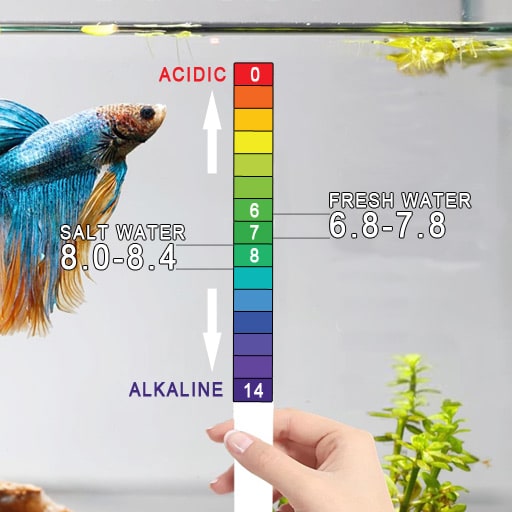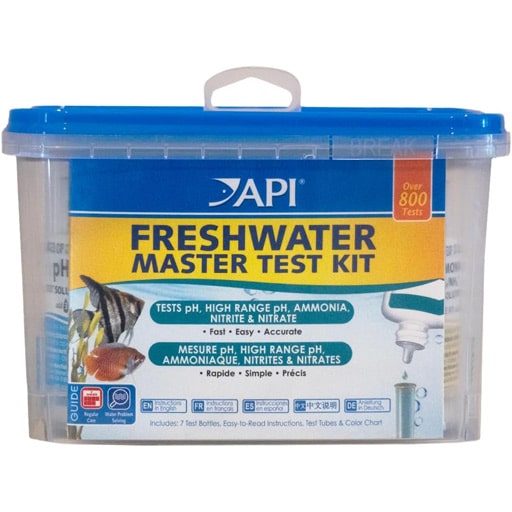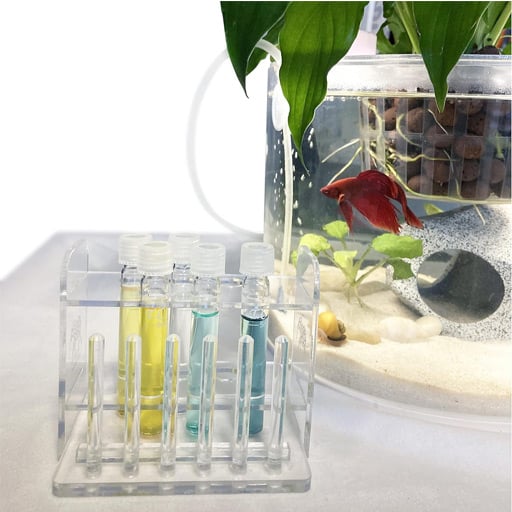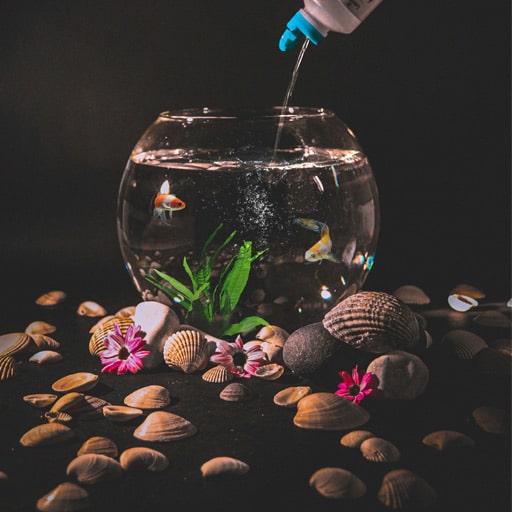A Beginner Guide To lowering Fish Tank pH
Welcome to FishTankFAQ.com, where I try to help beginners like you make fishkeeping simple and fun. If you’re wondering, “How do I bring my aquarium pH down safely?” you’re not alone—I’ve struggled with high pH in my own tanks! High pH can stress fish, but with the right approach, you can lower it effectively and keep your aquarium thriving. In this guide, I’ll explain why pH matters, how to test it, safe methods to lower it, and common mistakes to avoid, all tailored for beginners. Drawing on my experience and insights from communities like Fishlore, this post will help you master your tank’s water chemistry. Let’s dive in!
Some links are affiliate links, meaning I may earn a commission at no cost to you. See my Affiliate Disclosure for details.

Why Aquarium pH Matters
pH measures how acidic or alkaline your tank’s water is, on a scale from 0 (acidic) to 14 (alkaline), with 7 being neutral. Most freshwater fish thrive at 6.8–7.8, while saltwater fish prefer 8.0–8.4. High pH (e.g., >8.0 in freshwater) can stress fish, weaken their immune systems, and harm sensitive species like tetras or discus. Causes of high pH include:
- Tap Water: Many municipal water sources have high pH (7.8–8.5) due to minerals.
- Substrate: Limestone or coral gravel raises pH over time.
- Low CO2: Poor aeration or plant activity can increase pH.
Lowering pH safely stabilizes your tank, ensuring fish health and water clarity.
Learn more about tank setup in my guide
Starting a Fish Tank for Beginners.
Step 1: Test Your Aquarium’s pH
Before lowering pH, test your water to confirm it’s too high. Regular testing is key to a healthy tank, as I learned after losing fish to unchecked parameters.
- Use a Test Kit: The API Master Test Kit (About $35) tests pH, ammonia, nitrite, and nitrate accurately. Compare to Tetra EasyStrips (about $10, faster but less precise).
- How to Test: Collect a water sample in a clean container, add test reagents per instructions, and compare to the pH color chart. Test weekly or if fish show stress (e.g., gasping, lethargy).
- Target pH: Aim for 6.8–7.8 for freshwater, 8.0–8.4 for saltwater. If above this, proceed to lowering methods.

Shop pH Testing Gear at Amazon
Step 2: Safe Methods On How to Bring Aquarium pH Down
Lowering pH requires gradual changes to avoid shocking fish (no more than 0.2–0.3 pH units per day). Here are four safe, beginner-friendly methods, based on my experience and research from Aquarium Co-Op:
Method 1: Use a Chemical pH Adjuster
- How It Works: Products like API pH Down ( about $8) or Seachem Acid Buffer ( about $10) lower pH by adding safe acids.
- Steps:
- Test pH and note the starting value (e.g., 8.0).
- Add 1–2 drops of API pH Down per gallon, mix, and wait 30 minutes.
- Retest pH and repeat daily until within target range (6.5–7.5).
- Pros: Fast, precise, beginner-friendly.
- Cons: Overuse can crash pH; test frequently.
- Tip: Use with API Master Test Kit to monitor changes.
Shop pH Adjusters on Amazon
Method 2: Add Natural Acidifiers
- How It Works: Organic materials like driftwood or peat moss release tannins to lower pH naturally.
- Steps:
- Add aquarium-safe driftwood (e.g., Fluval Mopani Driftwood( about $15) or Seachem Peat Moss ( about $12) to your tank.
- Soak materials in water for 24–48 hours to reduce initial tannin staining.
- Place in tank and test pH weekly for gradual reduction.
- Pros: Natural, aesthetic, long-term pH control.
- Cons: Slower than chemical adjusters; may tint water slightly.
- Tip: Combine with plants like Java fern, but check compatibility in Can Aquarium Plants Grow in Sand [internal link].
Shop Fist Tank Driftwood on Amazon
Method 3: Use Reverse Osmisis or Distilled Water
- How It Works: Reverse osmosis (RO) or distilled water has low pH and minerals, diluting tap water’s alkalinity.
- Steps:
- Mix 50% RO/distilled water (e.g., Aquatic Arts RO Water ( about $10/gallon) with 50% tap water.
- Test pH after mixing and perform 25% water changes weekly.
- Add Seachem Equilibrium (about $8) to restore minerals for fish health.
- Pros: Effective for high-pH tap water; customizable.
- Cons: Requires RO unit ($50–$100) or purchasing water; time-intensive.
- Tip: Use during water changes.
Method 4: Increase CO2 with Plants or Aeration
- How It Works: Live plants or CO2 injection lower pH by increasing carbonic acid.
- Steps:
- Add low-maintenance plants like Java Fern or use a Fluval CO2 Kit about$30) for planted tanks.
- Ensure 8–10 hours of light with NICREW ClassicLED.
- Test pH weekly to monitor gradual reduction.
- Pros: Natural, enhances tank aesthetics.
- Cons: Slow; CO2 kits are costly for small tanks.
- Tip: Avoid with sensitive plants.
| Method | Ease of Use | Speed | Cost | Pros | Cons |
|---|---|---|---|---|---|
| Chemical Adjuster | Easy | Fast | $8–$10 | Precise, beginner-friendly, quick | Risk of pH crash if overused |
| Natural Acidifiers | Moderate | Slow | $12–$15 | Natural, aesthetic, long-term control | Slower, may tint water slightly |
| RO/Distilled Water | Moderate | Medium | $10–$100 | Effective for high-pH tap water | Needs RO unit or purchased water |
| CO2 Increase (Plants/Kit) | Hard | Slow | $10–$30 | Natural, enhances tank aesthetics | Slow, CO2 kits costly for small tanks |
Step 3: Monitor and Maintain pH Stability
After lowering pH, maintain stability to keep fish healthy.
- Test Weekly: Use API Master Test Kit [affiliate link] to check pH, ammonia, nitrite, and nitrate. Aim for 6.8–7.8(freshwater) or 8.0–8.4 (saltwater).
- Water Changes: Perform 25% weekly changes with a Water Conditioner to stabilize parameters.
- Check Substrate: Avoid limestone or coral gravel, which raise pH. Use CaribSea Super Naturals Gravel.
- Aeration: Use an air pump like and bubbler (about $20) to balance CO2 and stabilize pH.

Learn more about tank setup in my guide
Starting a Fish Tank for Beginners.
Common Mistakes to Avoid
- Rapid pH Changes: Dropping pH too quickly (>0.3 units/day) shocks fish. Adjust gradually and test daily.
- Overusing Chemicals: Excess API pH Down can crash pH to dangerous levels (<6.0). Follow dosing instructions.
- Ignoring Buffers: Hard water (high KH) resists pH changes. Test KH with API KH Test Kit and use RO water if needed.
- Neglecting Testing: Skipping tests risks missing pH spikes. Test weekly with .
How to Bring Aquarium pH Down FAQs:
Here are answers to common pH-related questions, based on my experience and insights from so different forums:
Q: Why is my aquarium pH too high?
A: High pH (e.g., >8.0 in freshwater) often comes from tap water (7.9–8.5), limestone substrates, or low CO2. Test with API Master Test Kit and use API pH Down or driftwood to lower it.
Q: How often should I test my aquarium pH?
A: Test weekly with API Master Test Kit or daily when adjusting pH. If fish show stress (e.g., gasping), test immediately.
Q: Can I use vinegar to lower aquarium pH?
A: No, vinegar is unsafe—it’s too strong and lacks buffering. Use API pH Down or Seachem Acid Buffer for safe, controlled pH reduction.
Q: Will lowering pH harm my fish?
A: Gradual changes (0.2–0.3 units/day) are safe. Rapid drops stress fish. Monitor with Test Kit and add API Stress Coat (about $8) to reduce fish stress.
Q: Can live plants help lower pH?
A: Yes, plants like Java Fern increase CO2, lowering pH slightly. Use with NICREW ClassicLED for 8–10 hours of light.
Q: How does substrate affect pH?
A: Limestone or coral gravel raises pH. Use neutral substrates like CaribSea Super Naturals Gravel.
Q: What if my tap water has high pH?
A: Mix 50% RO/distilled water with tap water to lower pH. Add Seachem Equilibrium to restore minerals.
Q: How do I know if my pH is stable?
A: Test pH twice weekly after adjusting, aiming for 6.8–7.8 (freshwater) with API Master Test Kit. Stable pH shows no swings over 0.3 units/day.
Conclution On How to Bring Aquarium pH Down
You’re now equipped to tackle high aquarium pH like a pro! I’ve shared beginner-friendly tips to safely lower your fish tank’s pH, from using API pH Down to adding driftwood or RO water. Regular testing with a reliable kit keeps your water chemistry stable, ensuring happy, healthy fish. Avoid rapid pH changes and monitor weekly to prevent stress on your fish. Share your pH success or ask questions down below in the comments box or send us a messag on the contact page.
- How Much Aquarium Gravel Do I Need for a Beginner Tank? - October 13, 2025
- Best Aquarium Testing Kit: A Complete Guide - September 27, 2025
- What Are the Best Aquarium Filters? - July 8, 2025

